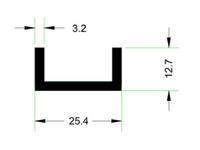joeygemma
Newbie level 6
- Joined
- Sep 10, 2010
- Messages
- 14
- Helped
- 0
- Reputation
- 0
- Reaction score
- 0
- Trophy points
- 1,281
- Location
- South Carolina, USA
- Activity points
- 1,384
Hello, I am new to this forum and I would appreciate any help you folks can provide.
I'd like to convert 28v to 12v, and I purchased an LM7824 and a few capacitors, but doing further research, it seems I may need to add a heat sink to this. Does anyone have any experience in this application that can provide some assistance?
Thanks!
I'd like to convert 28v to 12v, and I purchased an LM7824 and a few capacitors, but doing further research, it seems I may need to add a heat sink to this. Does anyone have any experience in this application that can provide some assistance?
Thanks!
